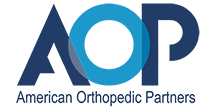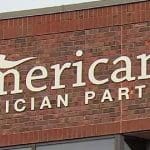If your practice can’t keep up with the strategic and operational tasks and challenges it is facing, you need help.

We at AOP understand the challenges orthopedic surgeons face every day and we’re here to stand beside you – uniting the best in private orthopedic practice with the advantages of collaboration.
In the News
-
American Orthopedic Partners (AOP) Grows Nationally
21 October, 2021 -
American Orthopedic Partners Adds New Jersey Practice
21 December, 2021 -
American Orthopedic Partners Adds Senior VP
06 December, 2021 -
American Orthopedic Partners Signs on Two New Practices
09 August, 2021 -
American Physician Partners to Close
18 July, 2023 -
Applications of Artificial Intelligence in Orthopedic Surgery
15 December, 2022
© 2024 American Orthopedic Partners, Inc. All rights reserved.













